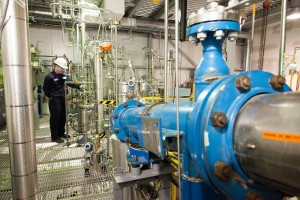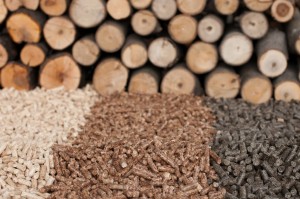I. Gasification

Gasification utilizes heat largely in the absence of oxygen to ultimately create syngas. In essence, carbon-rich residues are transformed into synthetic gases by way of drying, gasifying, cooling, and eventually shipment to a biorefinery for the purpose of liquefying the new fuel source. At its core, gasification converts lingocellulosic material (e,g, agricultural and forest residue) to liquid biofuel through a long and involved process of state-changes. In fact, this process is so complex that only a few companies actively pursue this technique. Among these companies is Enerkem, a transnational corporation centered in Montreal and (recently) expanding into the U.S. The visual above captures some of the equipment Enerkem utilizes in the gasification process.
II. Enzymatic Technologies
This second form of technology seeks to recover and ferment sugars trapped in lingocellulosic material by way of the application of genetically modified biological agents. Clearly, the challenge here is that lingocellulosic materials are naturally engineered in a manner such that these sugars exist in complex structures of protective materials, and thus this technological approach remains largely in the research and development stage. Further, this technology works only when considering homogeneous material; in other words, it will not work if a mixture of second-generation materials exist as the fuel source. Clearly a set-back, the lack of tolerance for heterogeneous mixtures gives rise to the third and final productive avenue, as discussed below.
III. Thermochemical Technologies

This particular method seeks to allow the conversion of even heterogeneous material, unlike the former option. Using heat alone, and further gasifying material into specific alcohols, this technological choice involves a lack of reliance on specific enzymes that may or may not be engineered in the near-future. In other words, prospects for success in the research and development stage give reason for considerable optimism.
(Composed by Robert King, edited by Eli Karp)
References
Labrie, Marie-Helen. “Gasification Technologies: Making Second- Generation Biofuels a Reality.” Biomass Magazine. BBI International, 2015. Web. 20 Apr. 2015.
“Monthly Biodiesel Production Report.” U.S. Energy Information Administration. EIA, 30 Mar. 2015. Web. 14 Apr. 2015.
